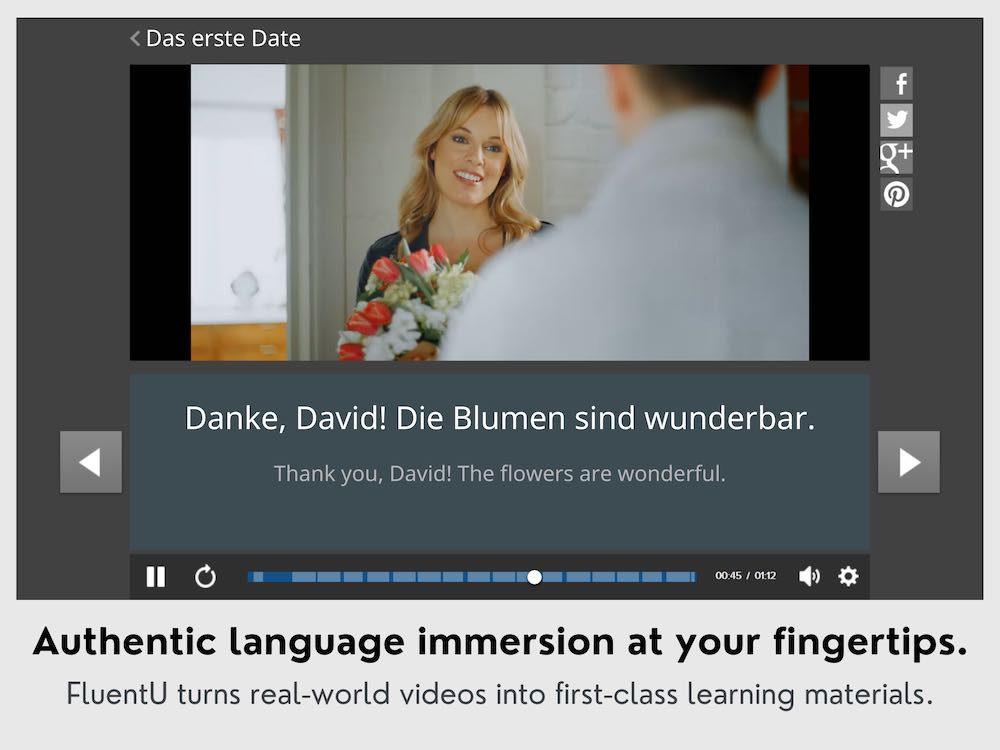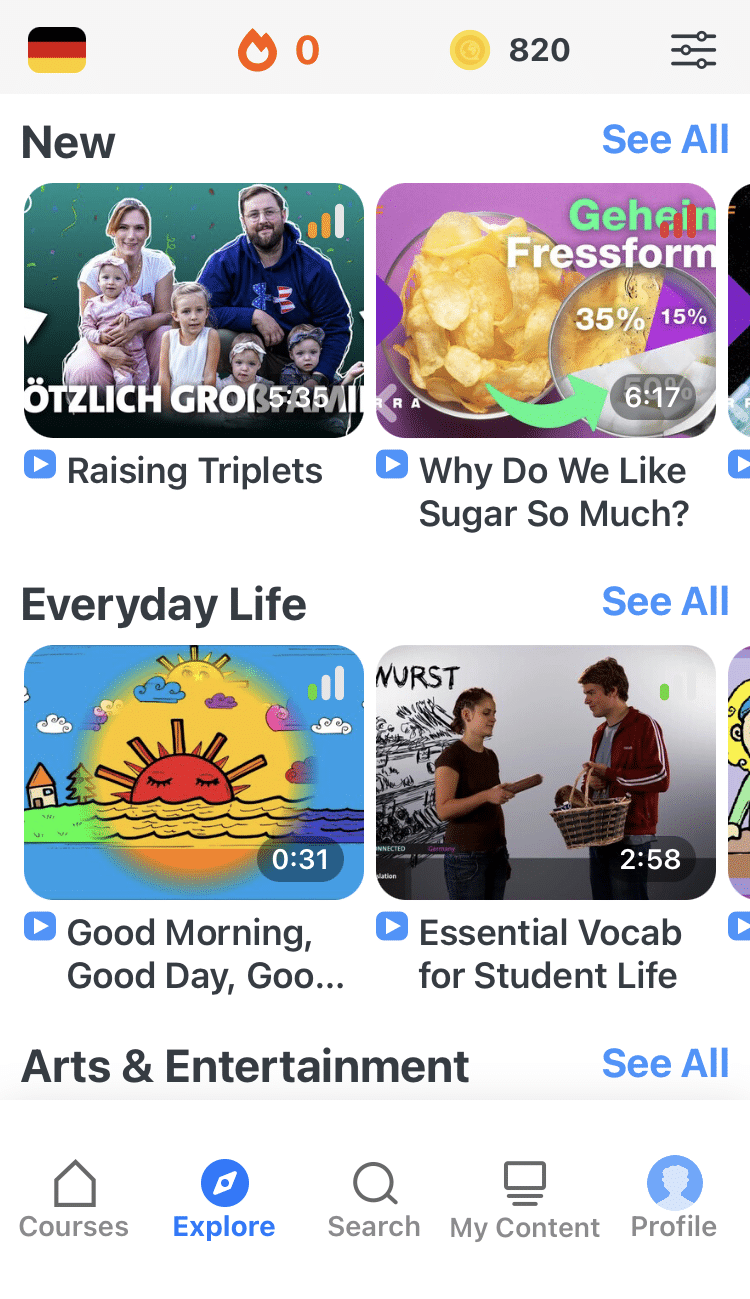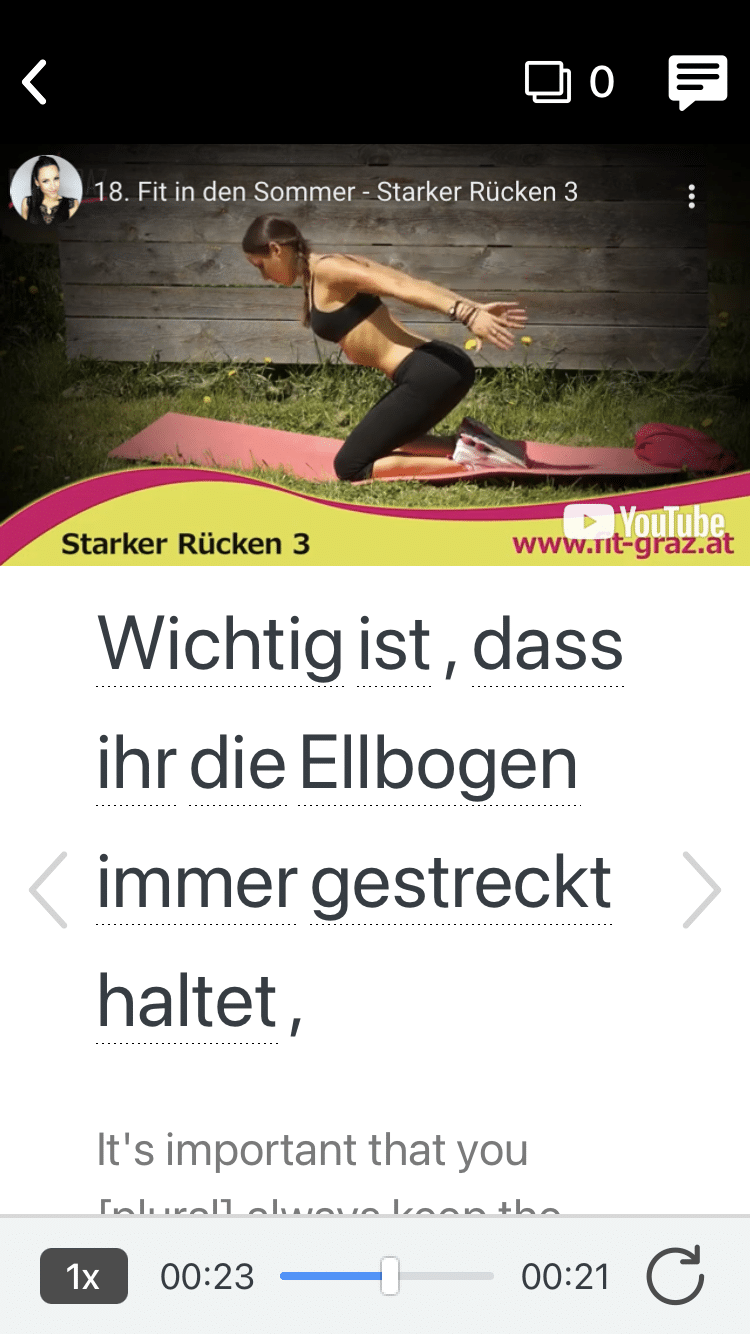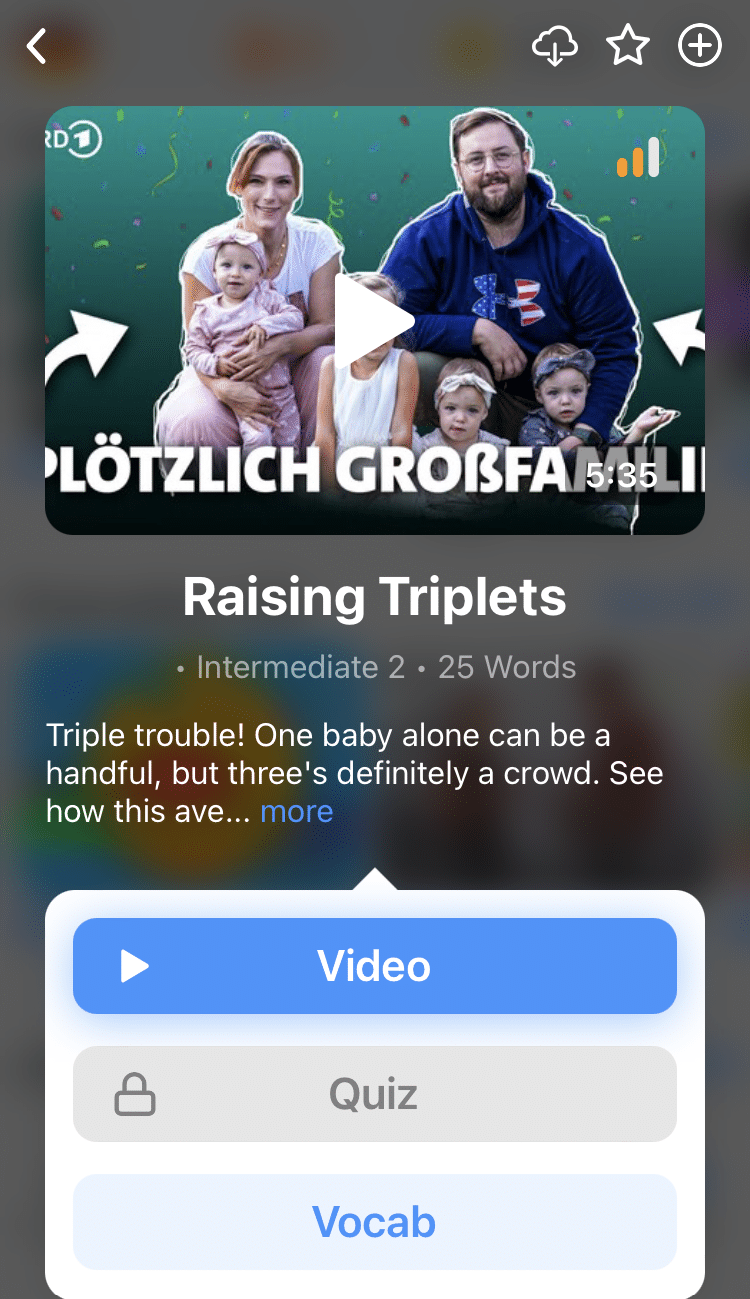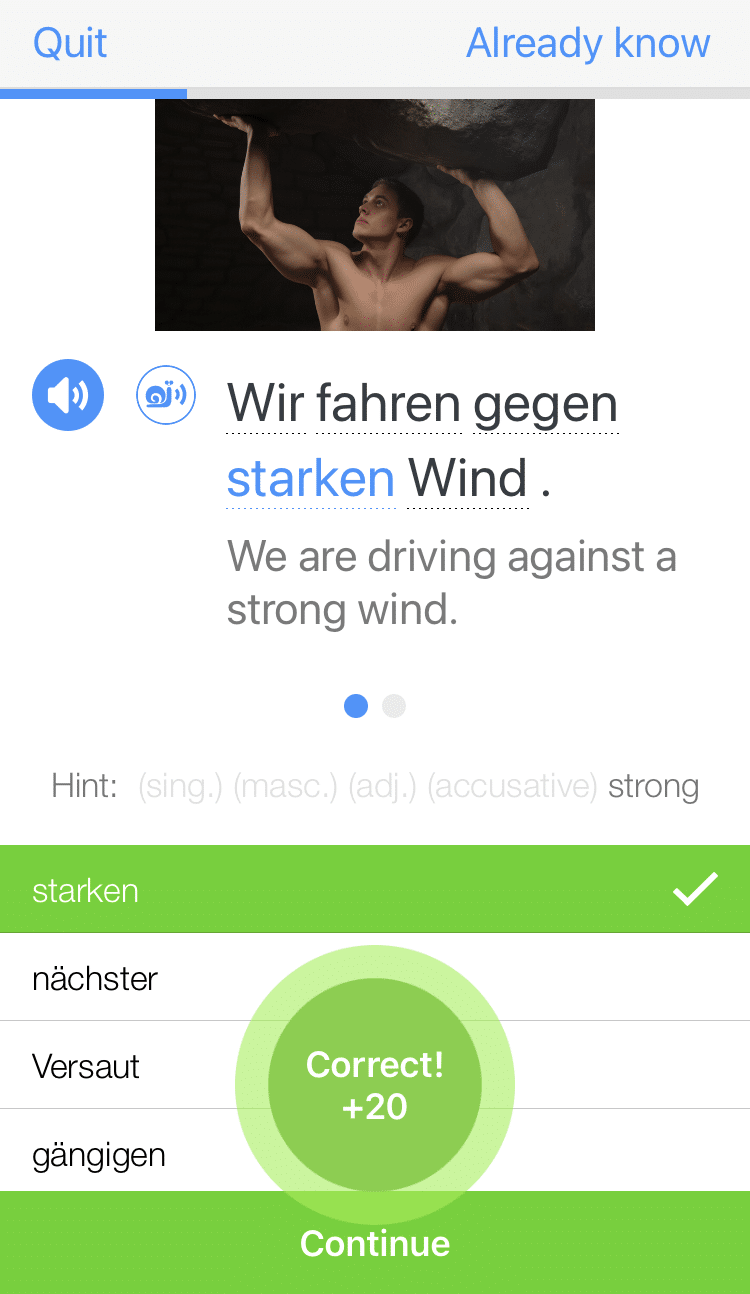
German Declension
There are subtle intricacies in German that convey as much information as the words spoken or written.
Declension is an integral part of the German language, subtly telling you the role of each word within a sentence.
If you’ve ever wondered why sometimes der Hund (the dog) sometimes turns into den or dem Hund, what those funny endings are on the end of adjectives are, and why there are so many different pronouns in German, then keep reading!
In this article, we’ll discuss what declension means for the German language, what sorts of characteristics to pay attention to when using declension, and what steps you need to follow to ensure you use declension properly.
Contents
- What Is Declension?
- Why Learn Declension in German?
- How to Learn German Declension
- How to Use Declension in German
- How Can You Practice German Declension?
- And One More Thing...
Download: This blog post is available as a convenient and portable PDF that you can take anywhere. Click here to get a copy. (Download)
What Is Declension?
In the context of German grammar, declension means providing essential information about the nouns in a sentence and how they relate to each other. This involves making the case, number and gender of a noun clear.
Think of it this way. When you speak in English about a noun, you somehow have to denote how many you are talking about. The sentence “Mary fed the ducks” tells you there’s more than one duck.
At the same time, the sentence structure—most importantly here, the verb—tells us who or what the subject is and who or what the direct object is. Mary is our subject, as she feeds the ducks, and since she is performing the action—feeding, which the hungry ducks receive happily–the ducks act as our direct object.
English mostly relies on word order to convey this information. We know that Mary is doing the feeding because she comes before the verb. However, German instead relies on declension, meaning the words before nouns will change in order to show both who is doing the action, and who is receiving it.
Let’s look at two sentences:
Der Mann füttert den Hund.
Den Hund füttert der Mann.
Both of these sentences mean “The man feeds the dog.” But even though the second example puts the dog at the beginning of the sentence, we know that the dog is the one being fed because of the article den. This is what we call putting a noun in a different case.
The article den also tells us that noun Hund is a masculine, singular noun.
This is what we mean by declension, changing the words before nouns in order to convey information about the noun and what it is doing in the sentence.
To summarize: The ability to break down a sentence into its various parts will be key to German declension—who is doing what to whom, and what is the gender and number of each noun. So remember, focus on case, gender and number!
Why Learn Declension in German?
German grammar is all about knowing what’s going on in the sentence and being able to pick out the various parts.
Knowing the declension patterns in German helps you memorize the genders that correspond to different nouns, which is necessary when you need to include adjective endings.
Memorizing not only the (1) case, (2) gender and (3) number of a noun, but also the corresponding grammar rules for denoting these three aspects, is crucial to understanding, speaking and writing German.
In other words, understanding declension will push your German skills from simple stock phrases to whatever wonderful things you may want to say!
How to Learn German Declension
These three aspects are crucial to understanding proper German declension.
Let’s look at some tips to help you learn all three. After that, we’ll help you put declension into practice.
1. Determining a noun’s case
The case of a German noun is usually determined by the context of the sentence and where the action is directed.
When nouns occur as the subject, they are in the nominative. This means there are no changes and every word is just as you’ll find it in the dictionary. For example:
Der Mann schwimmt schnell.
(The man swims fast.)
Er schwimmt schnell.
(He swims fast.)
Direct objects that are on the receiving end of an action take the accusative case. For example:
Ich sehe den Mann.
(I see the man.)
Ich sehen ihn.
(I see him.)
Notice how der Mann has become den Mann, showing that the man is on the receiving end of the verb “to see”.
The dative case denotes indirect objects and takes it one step further. The dative usually shows the receiver of the direct object. Here’s an example:
Der Mann gibt der Frau ein Geschenk.
(The man gives the woman a present.)
Der Mann is the subject—nominative case—because he’s doing the action, and the verb geben is conjugated accordingly. Our direct object is ein Geschenk, because that is what is being given; it’s in the accusative case.
Lastly, der Frau is our indirect object. The woman is receiving the direct object, the present, so she goes in the dative case. This changes die Frau to der Frau.
The genitive case shows possession. It’s a bit more complex in terms of use and being able to identify it, but let’s look at an example:
Das Haus meiner Eltern ist sehr alt.
(Literal translation: The house of my parents is very old.)
In English, we would phrase this as: “My parents’ house is very old.”
German word order aside, the important part here is the word “of.” Look at the English sentence above: The apostrophe and “s” attached to “parents” denotes possession, but in German, the genitive case is used instead.
2. Determining a noun’s gender
The best way to determine a noun’s gender is to use a dictionary or an app. Plain and simple. Memorization is best for nouns you’ll use often in everyday speech, but if you’re unsure, always consult a dictionary.
There are also many great resources and tricks for memorizing what sorts of nouns take a specific gender. For example, nouns ending in –keit and -heit are almost always feminine.
There are other characteristics in German that make it easy to guess which nouns take what gender without looking it up.
3. Determining a noun’s number
Singular nouns will always be conjugated to the er / sie / es form of whichever verb occurs in the sentence.
However, plural nouns will always use the infinitive form of the verb. If you’re unsure about the number in regards to the subject, look first at the verb.
If you’re still in doubt, look up the form of the noun to double check. Nouns will nearly always change in spelling to reflect a quantity higher than one.
Keep these contextual cues in mind when you are writing German sentences, and work through each sentence to determine proper:
(1) case
(2) gender
(3) number
After you’ve determined which gender and case are necessary, and the number of things you’re dealing with, use the following steps to correctly write your complete German sentence.
How to Use Declension in German
Definite Articles: Der Words
Masculine Feminine Neuter Plural Nominative der die das die Accusative den die das die Dative dem der dem den Genitive des der des der
Der words show definitively that you are speaking about someone or something specific, like “the man” or “the tree,” and not just “a man” or “any tree.”
You might say, “I like the tree, but a man told me it was not for sale.” Depending on context, readers should know what tree is being referred to, but “a man” is too vague to figure out who the man is, or which one is being referred to. Therefore, the “a” in “a man” is an indefinite article—more about that below.
You might also consider the difference between definite and indefinite in context of particularity: that tree (definite) vs. any tree (indefinite).
Indefinite Articles: Ein Words
Masculine Feminine Neuter Nominative ein eine ein Accusative einen eine ein Dative einem einer einem Genitive eines einer eines
We spoke about “a man” and “a tree,” and for those instances in German, we use ein words. Let’s go through each case again, this time for ein.
Just like for der words, it’s easiest to memorize the strings of articles for each case. However, indefinite articles don’t apply to plural. After all, you can’t have “a ducks”! Keep this in mind as you practice.
Plural Possessives
Nominative meine Accusative meine Dative meinen Genitive meiner
Another great thing about indefinite articles is that we use the same endings for the possessive—just add an “m” to the start and you’ll be ready to go. In this case, though, we do need the plural form; these are the correct plural possessives.
Nouns Without Articles
Masculine Feminine Neuter Plural Nominative -er -e -es -e Accusative -en -e -es -e Dative -em -er -em -en Genitive -es -er -es -er
What if a noun isn’t preceded by an article, but an adjective instead? Do we still have to include the article?
The answer is complex. In fact, this is the best illustration of the purpose of declension. When you don’t know anything about the noun in the sentence, the declension will have all the clues necessary.
In short, just as in English, we don’t always include an article before the noun, but in German you do have to somehow denote (1) case, (2) gender and (3) number.
Sentences like “Broken glass covered the floor,” or “Please buy me some red potatoes” or even “I would like hot chocolate!” are all instances where the nouns mentioned do not have a definite or indefinite article attached. In these cases, the adjective before the noun fulfils this role.
For instance, the last example sentence, in German, would read:
Die Schokolade is our noun here, and since the chocolate is being acted on by Ich, we need to use the accusative feminine ending for heiß, which is -e.
How Can You Practice German Declension?
After reading this post, you’ll probably be wondering how to practice the German declension. Here are a few resources to get started with to help you on your journey to mastering this aspect of the German language.
This program lets you watch how native speakers use declensions through German videos.
FluentU takes authentic videos—like music videos, movie trailers, news and inspiring talks—and turns them into personalized language learning lessons.
You can try FluentU for free for 2 weeks. Check out the website or download the iOS app or Android app.
P.S. Click here to take advantage of our current sale! (Expires at the end of this month.)
This is a great app for learning any aspect of German grammar. You choose a specific grammar rule you want to learn and fill in the blanks in sentences. The program gives you the option to write in your answer or select from multiple choices. You can create your own sentences to practice with, as well.
This site gamifies learning grammar. Here, you can find grammar-based flashcards to practice with that have a sleek design. If you want to go for a short review, there are lightning rounds that average about five minutes to give you a quick grammar boost.
German declension requires much in the way of practice and memorization, but as you write, read and speak the language, you will improve!
You can also find an incredibly helpful guide here. Even the best need to reference a cheat sheet once in a while!
Remember the processes above and you’ll have declension down pat faster than you can say, “Deutsche Grammatik—Hilfe!” (German grammar—help!)
Download: This blog post is available as a convenient and portable PDF that you can take anywhere. Click here to get a copy. (Download)
And One More Thing...
Want to know the key to learning German effectively?
It's using the right content and tools, like FluentU has to offer! Browse hundreds of videos, take endless quizzes and master the German language faster than you've ever imagine!
Watching a fun video, but having trouble understanding it? FluentU brings native videos within reach with interactive subtitles.
You can tap on any word to look it up instantly. Every definition has examples that have been written to help you understand how the word is used. If you see an interesting word you don't know, you can add it to a vocabulary list.
And FluentU isn't just for watching videos. It's a complete platform for learning. It's designed to effectively teach you all the vocabulary from any video. Swipe left or right to see more examples of the word you're on.
The best part is that FluentU keeps track of the vocabulary that you're learning, and gives you extra practice with difficult words. It'll even remind you when it’s time to review what you’ve learned.
Start using the FluentU website on your computer or tablet or, better yet, download the FluentU app from the iTunes or Google Play store. Click here to take advantage of our current sale! (Expires at the end of this month.)
